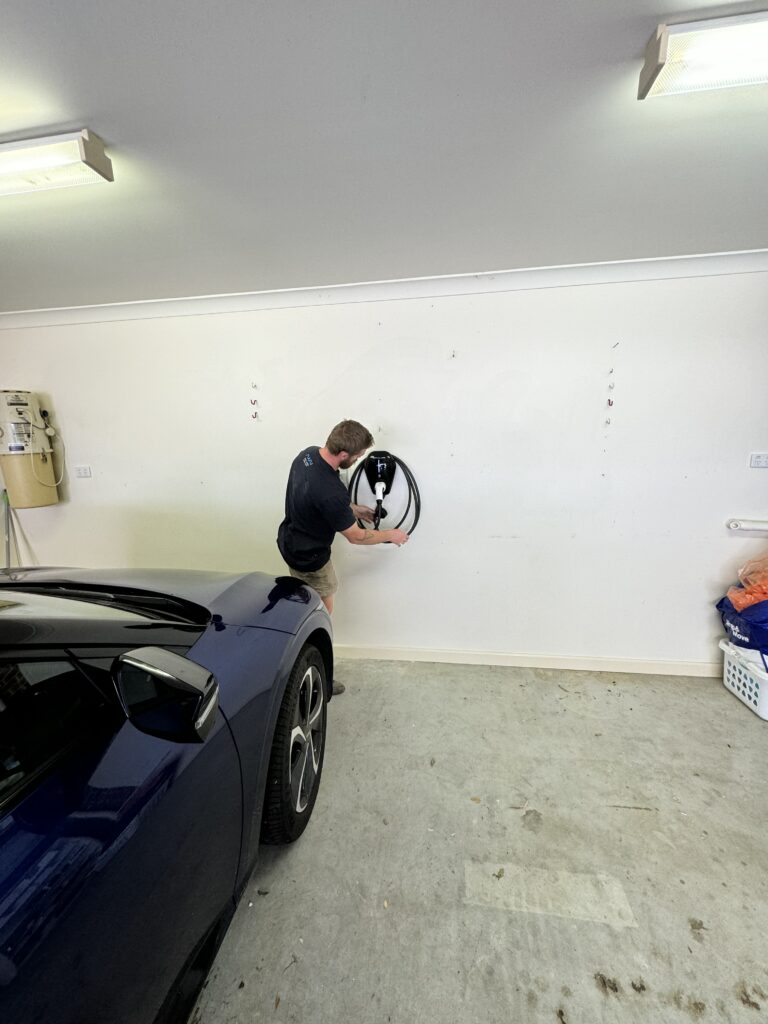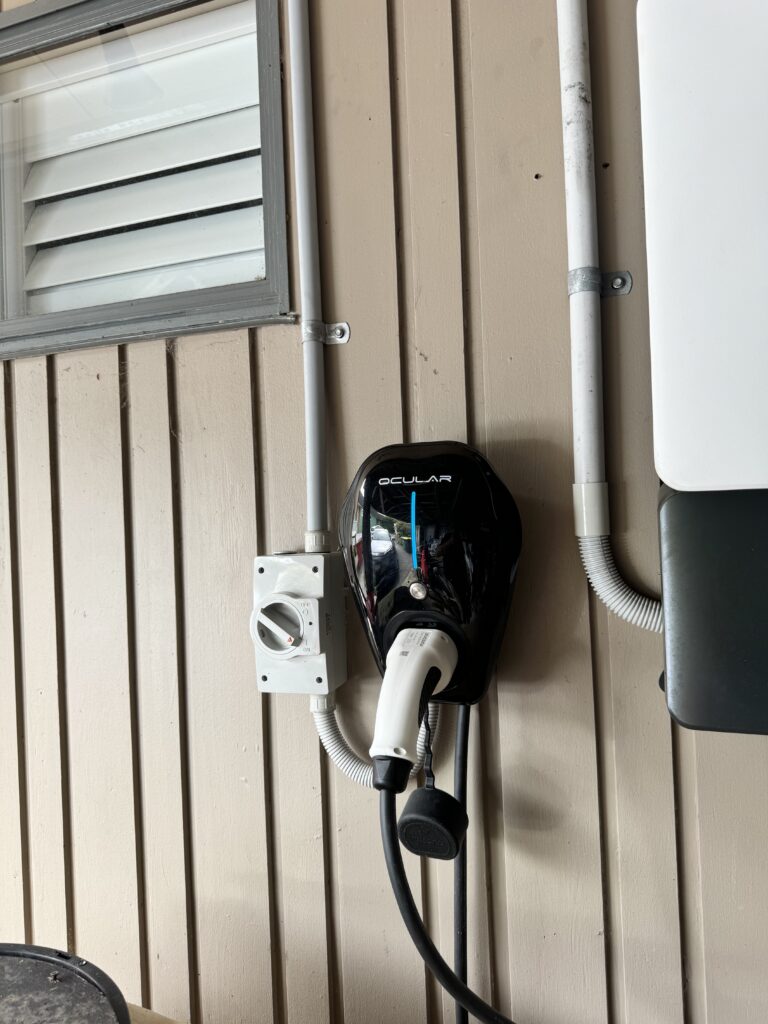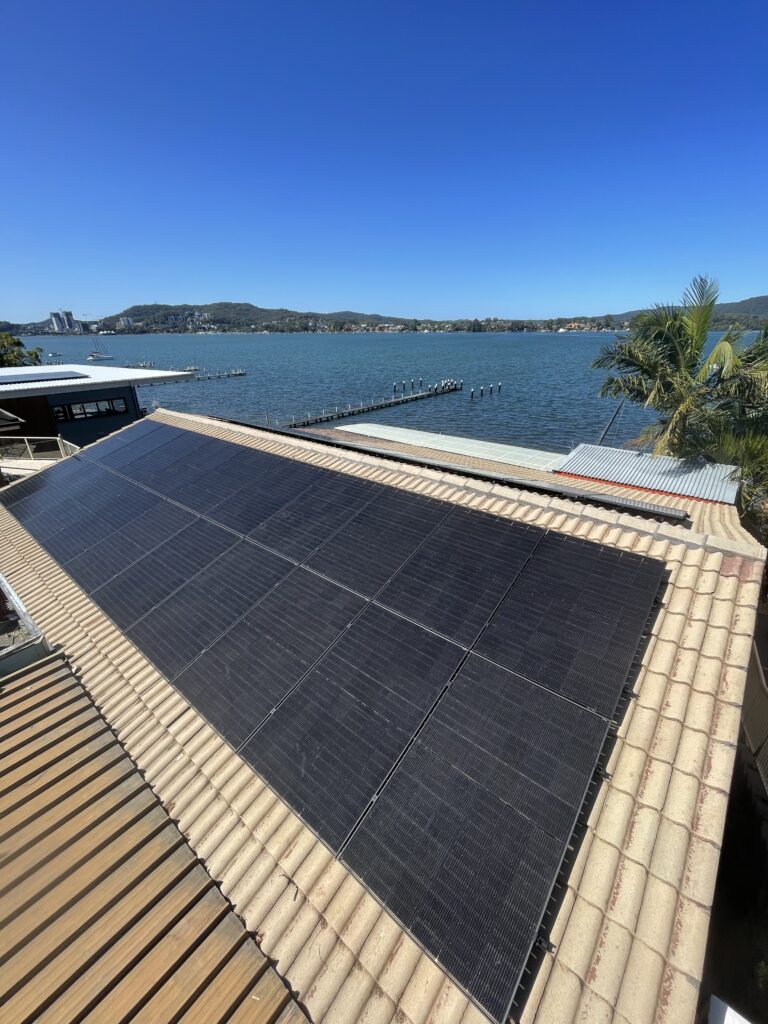Charging an EV at home requires a compatible charger, adequate electrical capacity, and safe installation. Most Australian homes can support a single-phase charger. Properties with three-phase supply can charge faster.
Charging methods
| Method | Description | Power output | Typical use |
|---|---|---|---|
| Mode 2 (standard outlet) | Portable charger using a 240 V socket | 2–3 kW | Occasional or emergency |
| Mode 3 (wallbox) | Dedicated charger wired to switchboard | 7–22 kW | Daily home charging |
Mode 2 charging uses existing wiring but is slow. Mode 3 wallboxes provide faster, safer, and consistent charging.
Choosing a charger
A wall-mounted charger is recommended for regular use. Key factors:
- output rating: 7 kW (single-phase) or 11–22 kW (three-phase)
- cable type: Type 2 plug is standard in australia
- safety features: built-in RCD protection and overcurrent detection
- smart control: optional scheduling and energy monitoring
- solar integration: supports charging from rooftop solar

Installation requirements
- electrical assessment – confirm available supply and main breaker capacity
- switchboard upgrades – may be required for older installations
- rcd protection – required under AS/NZS 3000 wiring rules
- location – close to parking area, sheltered, with suitable cable reach
- isolation switch – must be accessible and clearly labelled
Installation must be completed by a licensed electrician. DIY installation is non-compliant and unsafe.

Charging time
Approximate charge duration for a 60 kWh battery:
| charger type | output | time from empty to full |
|---|---|---|
| 240 V outlet | 2.4 kW | 24–30 hours |
| 7 kW wallbox | 7 kW | 8–10 hours |
| 11 kW wallbox | 11 kW | 6–7 hours |
| 22 kW wallbox | 22 kW | 3–4 hours |
Charging time varies with battery capacity and charger efficiency.
Safe operation
- plug directly into the socket — never use extension leads
- keep cables dry and untangled
- avoid damaged plugs or sockets
- inspect connectors for heat or discolouration
- disconnect from mains before cleaning
- follow manufacturer instructions for each charger
If the circuit trips or the charger shows a fault, stop charging and have it inspected.
Integrating solar
Solar compatible chargers can prioritise surplus solar generation. Charging directly from solar reduces grid use and overall energy cost. Smart chargers can adjust output based on available solar power and household load.

Cost and efficiency
Average electricity cost per charge:
| Energy rate | 60 kWh battery cost | Estimated range |
|---|---|---|
| $0.25 / kWh (grid) | ~$15 | 350–450 km |
| solar surplus | ~$0 | Depends on generation |
Charging off-peak or using solar minimises running costs.
When to contact a professional
Contact a licensed installer if:
- you need a dedicated wall charger
- your switchboard lacks capacity
- you want solar or load management integration
- your existing charger faults or trips circuits
NWE Group installs EV chargers across NSW, including Tesla Wall Connector, Zappi, Ocular, Wallbox, and Smappee systems. All installations comply with AS/NZS 3000 standards and local network requirements.
